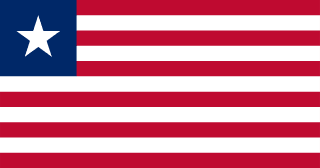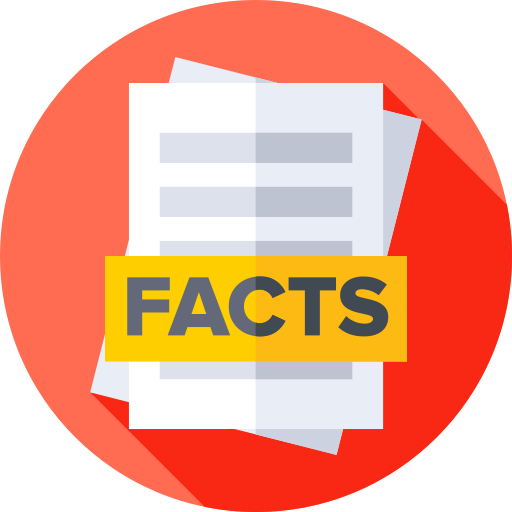Liberia - Geography

Here, let us take a look at the Geography of Liberia. Facing the Atlantic Ocean, the coastline is characterized by lagoons, mangrove swamps, and river-deposited sandbars; the inland grassy plateau supports limited agriculture. Mother's mean age at first birth is 19.1 years (2019/20 est.) (Note: data represents median age at first birth among women 25-49), whereas, the Maternal mortality ratio is 628 deaths/100,000 live births (2023 est.)
Geographical data of Liberia
| Location | Western Africa, bordering the North Atlantic Ocean, between Cote d'Ivoire and Sierra Leone |
|---|---|
| Geographic coordinates | 6 30 N, 9 30 W |
| Map references | Africa |
| Tarrain | mostly flat to rolling coastal plains rising to rolling plateau and low mountains in northeast |
| Natural Resources | iron ore, timber, diamonds, gold, hydropower |
| Natural Hazards | dust-laden harmattan winds blow from the Sahara (December to March) |
| Irrigated Land | 30 sq km (2012) |
| Major rivers (by length in km) | |
| Major aquifers | |
| Land Boundaries | 1,667 km |
| Border Countries | Guinea 590 km; Cote d'Ivoire 778 km; Sierra Leone 299 km |
| Coastline | 579 km |
| Climate | tropical; hot, humid; dry winters with hot days and cool to cold nights; wet, cloudy summers with frequent heavy showers |
| Area | |
| Total Area | |
| Land Area | 96,320 sq km |
| Water Area | 15,049 sq km |
| comparative Area | slightly larger than Virginia |
| Maritime Claims | |
| Territorial sea | 12 nm |
| Contiguous zone | 24 nm |
| Exclusive economic zone | 200 nm |
| Continental shelf | 200 nm |
| Elevations | |
| Highest point | Mount Wuteve 1,447 m |
| Lowest point | Atlantic Ocean 0 m |
| Mean elevation | 243 m |
| Land Use | |
| Agricultural land | 20% (2023 est.) |
| Agricultural land: arable land | arable land: 5.2% (2023 est.) |
| Agricultural land: permanent crops | permanent crops: 2.1% (2023 est.) |
| Agricultural land: permanent pasture | permanent pasture: 12.7% (2023 est.) |
| Forest | 66.5% (2023 est.) |
| Other | 13.5% (2023 est.) |
Population Distribution
More than half of the population lives in urban areas, with approximately one third living within an 80-km (50-mi) radius of Monrovia, as shown in this population distribution map
People and Society
In Liberia, the different Ethnic groups are such that we have: Kpelle 20.2%, Bassa 13.6%, Grebo 9.9%, Gio 7.9%, Mano 7.2%, Kru 5.5%, Lorma 4.8%, Krahn 4.5%, Kissi, 4.3%, Mandingo 4.2%, Vai 3.8%, Gola 3.8%, Gbandi 2.9%, Mende 1.7%, Sapo 1%, Belle 0.7%, Dey 0.3%, other Liberian ethnic group 0.4%, other African 3%, non-African 0.2% (2022 est.)
| Population | |
|---|---|
| Pop growth rate | 2.32% (2024 est.) |
| Birth rate | 32.4 births/1,000 population (2024 est.) |
| Death rate | 8.3 deaths/1,000 population (2024 est.) |
| Health expenditure | |
| Physicians Density | |
| Hospital bed Density | 1.6 beds/1,000 population (2021 est.) |
| Total fertility rate | 3.93 children born/woman (2024 est.) |
| Gross reproduction rate | 1.94 (2024 est.) |
| Contraceptive prevalence rate | |
| Est married women (ages 15-49) | 48.7% (2023 est.) |
| Literacy | |
| Education expenditures | |
| Net Migration rate | -0.8 migrant(s)/1,000 population (2024 est.) |
| Nationality | Liberian | Liberian(s) |
| Languages | English 20% (official) and 27 indigenous languages, including Liberian English variants |
| Religions | Christian 84.9%, Muslim 12%, Traditional 0.5%, other 0.1%, none 2.6% (2022 est.) |
| Age Structure | |
| 0-14 years | 38.9% (male 1,064,100/female 1,052,556) |
| 15-64 years | 57.9% (male 1,566,263/female 1,579,835) |
| 65 years and over | 3.2% (2024 est.) (male 80,961/female 93,534) |
| Dependency Ratios | |
| Total dependency ratio | 72.8 (2024 est.) |
| Youth dependency ratio | 67.3 (2024 est.) |
| Elderly dependency ratio | 5.5 (2024 est.) |
| Potential support ratio | 18 (2024 est.) |
| Median Age | |
| Total | 19.9 years (2024 est.) |
| Male | 19.8 years |
| Female | 20 years |
| Urbanization | |
| Urban population | 53.6% of total population (2023) |
| Rate of urbanization | 3.41% annual rate of change (2015-20 est.) |
| Major urban areas (Pop) | 1.678 million MONROVIA (capital) (2023). |
| Sex Ratio | |
| At birth | 1.03 male(s)/female |
| 0-14 years | 1.01 male(s)/female |
| 15-64 years | 0.99 male(s)/female |
| 65 years and over | 0.87 male(s)/female |
| Total population | 1 male(s)/female (2024 est.) |
| Infant Motality | |
| Total | 55.7 deaths/1,000 live births (2024 est.) |
| Male | 61 deaths/1,000 live births |
| Female | 50.2 deaths/1,000 live births |
| Life Expectancy at birth | |
| Total population | 61.6 years (2024 est.) |
| Male | 59.9 years |
| Female | 63.3 years |
| Drinking Water Sources | |
| Improved: urban | urban: 84.6% of population (2022 est.) |
| Improved: rural | rural: 65.5% of population (2022 est.) |
| Improved: total | total: 75.6% of population (2022 est.) |
| Unimproved: urban | urban: 15.4% of population (2022 est.) |
| Unimproved: rural | rural: 34.5% of population (2022 est.) |
| Unimproved: total | total: 24.4% of population (2022 est.) |
| Sanitation facility acess | |
| Improved: urban | urban: 70.1% of population (2022 est.) |
| Improved: rural | rural: 25.1% of population (2022 est.) |
| Improved: total | total: 49% of population (2022 est.) |
| Unimproved: urban | urban: 29.9% of population (2022 est.) |
| Unimproved: rural | rural: 74.9% of population (2022 est.) |
| Unimproved: total | total: 51% of population (2022 est.) |
| Alcohol consumption per capita | |
| Total | 3.12 liters of pure alcohol (2019 est.) |
| Beer | 0.38 liters of pure alcohol (2019 est.) |
| Wine | 0.44 liters of pure alcohol (2019 est.) |
| Spirits | 2.28 liters of pure alcohol (2019 est.) |
| Other alcohols | 0.02 liters of pure alcohol (2019 est.) |
| Tobacco use | |
| Total | 6.4% (2025 est.) |
| Male | 11.5% (2025 est.) |
| Female | 1.5% (2025 est.) |
| Child marriage | |
| Women married by age 15 | 5.8% (2020) |
| Women married by age 18 | 24.9% (2020) |
| Men married by age 18 | 8.4% (2020) |
Demographic profile
All Important Facts about Liberia
Want to know more about Liberia? Check all different factbooks for Liberia below.









